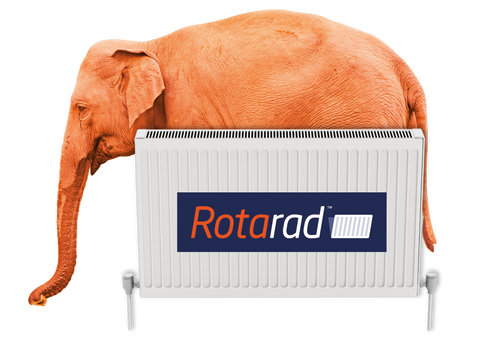Allergies
The Science Behind How Dirty Radiators Are Damaging Your Health
Central heating radiators can have implications on your health if not cleaned properly. Below is a series of educational videos that uncover how and why dust behind radiators are a threat to our health.
Learn how radiators increase the exposure to dust particles containing allergens, which have adverse effects on the well-being of house occupants, and how this could be a possible link to increased hospital admissions. Click here to read the full literature review survey.
How Household Dust Is Affecting Us

What Causes This Problem?
The attempts to save energy and reduce heating costs over recent years have led to the development of technologies such as Double Glazing windows, advanced central heating systems and advanced roofing insulation. However, this has also had a negative impact when it comes to reducing levels of dust.
Central heating radiators create ideal conditions for dust mites, mould spores and microbiological infections to flourish, creating higher levels of allergens that are then circulated via heat convection which ultimately create poorer indoor air quality for us, especially within the winter months.
Research by Arcc Network shows cases of respiratory infection allergies and asthma have risen significantly because of newer stringent green building regulations and the rise in the refurbishment of older properties, reducing ventilation and increasing condensation, resulting again in poorer air quality.
The dust mite is the most common cause of allergy symptoms in the UK. It is one of the most potent triggers of allergy reactions and a common trigger for rhinitis, asthma and eczema. Allergy symptoms include sneezing, watery eyes, coughing and wheezing.
The dust mite is found in almost every human habitat, but it is invisible to the human eye. Its nests are made in bedding, curtains, carpets, soft furnishings and soft toys, and can be present in the home all year round.
NHS Choices reports that indoor allergies are very common and that 10-20% of the population now has an indoor allergy. The average person in the UK spends 92% of their time indoors.
“Home fever” is a term used by Allergy UK to describe out-of-season hay fever symptoms. It is triggered by allergens such as dust mites, moulds, cleaning products and pets that are present in the home or office. Allergy UK estimates that at least 12 million people are allergic to their own home.
How Radiators Contribute:

Our Research
Rotarad is proud to be partnered with Keele University, working together to collaborate research findings which identify the relationship between dust and common health problems such as respiratory allergies and asthma.
Together we have identified that dust is becoming an ever increasing problem, as the list of harmful cases it has been linked to is expanding. This is an issue we have found the majority of people are simply unaware of.
Our main goals are to help raise awareness of these issues, and we are aspiring to help introduce new commercial standards which will ultimately reduce the chances of our health being affected by dust.

The Elephant in the room…
We know that radiators aid the circulation of allergens and bacteria within buildings, but we have yet to find anyone talking about this problem in detail
It is a requirement within NHS facilities that all parts of a radiator must be visibly clean. We would like to see this standard become adopted across all commercial buildings and households.

Cleaner Radiators, Better Health
The Rotarad radiator conversion kit allows the radiator to be dropped away from the wall, allowing clear access for faster and more thorough cleaning.
It is widely compatible and can be easily installed with new radiators, or retrofitted onto existing ones.

